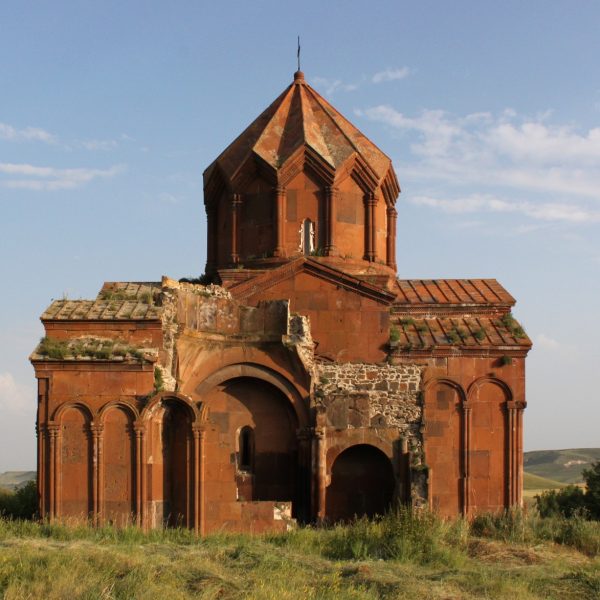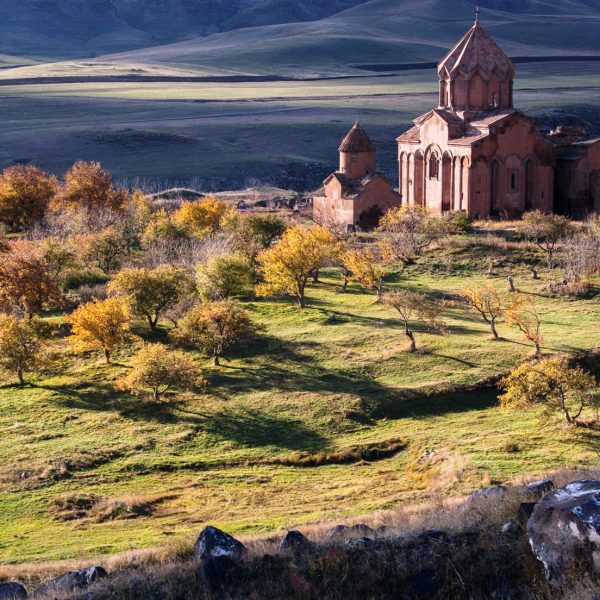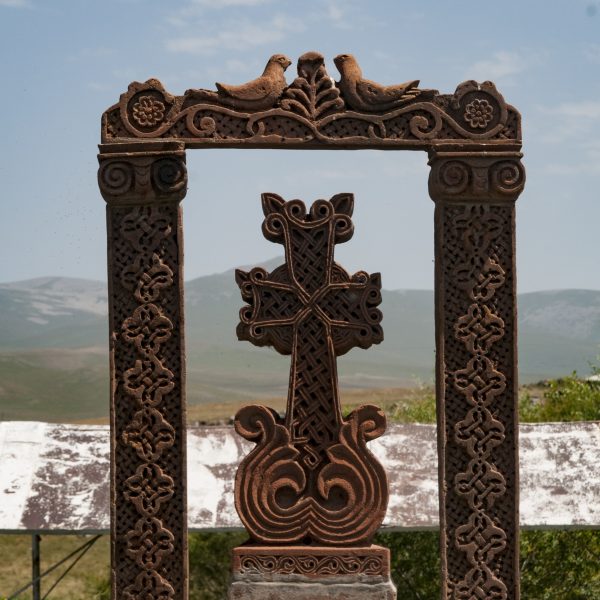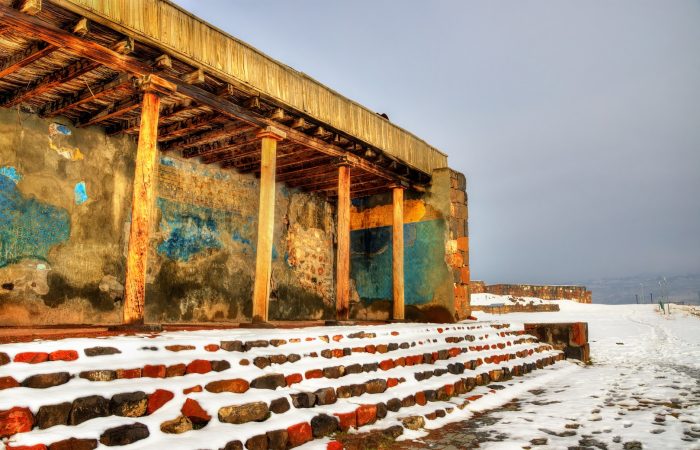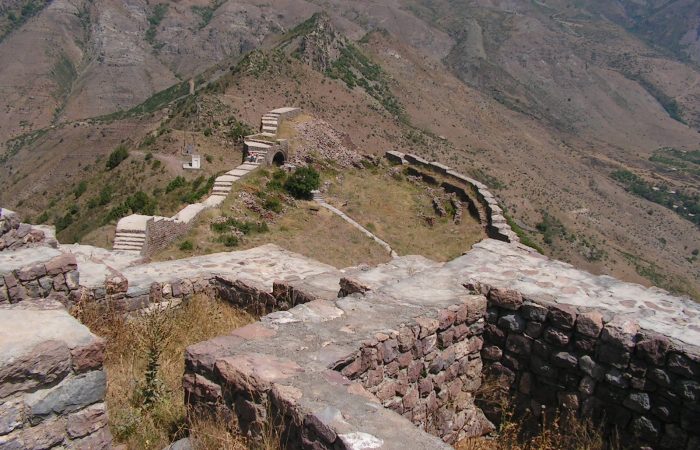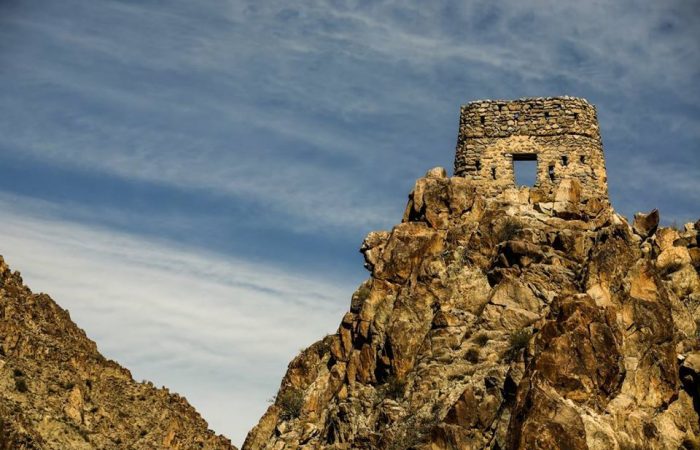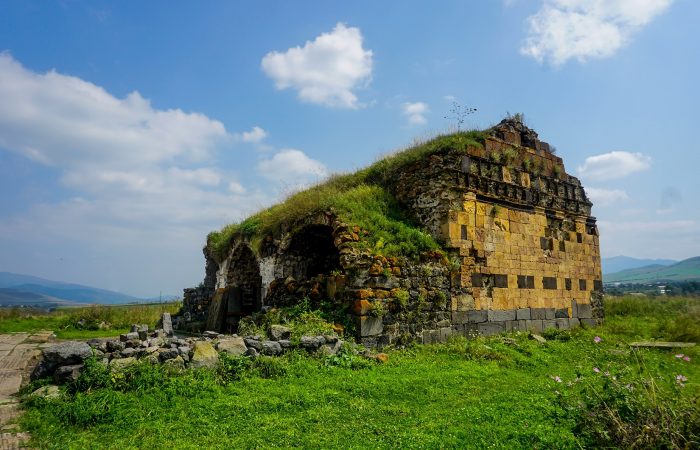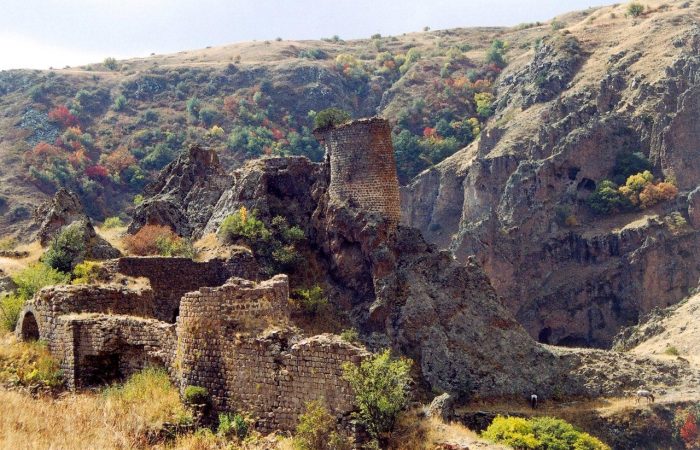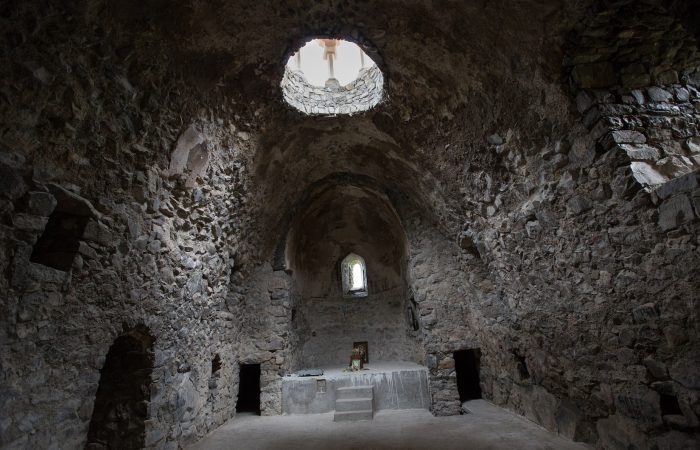Marmashen Monastery: The Churches
The monastery consists of four churches and the ruins of the gavit. The main church is called Katoghike or St. Astvatsamayr (Holy Mother of God), the second church is built very close to Katoghike. It is assumed that the smaller church was the imitation of the main church, as it displays the same style and design.
The architecture of Katoghike Church includes the most typical Armenian designs and structures. Although the inner and outer walls are constructed of tuff, which is responsible for the reddish color of the churches, basalt is used for the base walls.
The third church is also smaller in size. Next, ruins of the gavit can still be seen today. Unfortunately, only the bottom parts of the walls have survived. Interestingly, the gavit stands directly on the grave of Vahram Pahlavuni. The grave belongs to the medieval times, but the tombstone is quite new. It was made in the 19th century.
Katoghike and the third churches were ruined during the Seljuk invasions. The buildings were later renovated by the descendants of Pahlavuni in 1225. This resulted in slight modifications of the original design. One of those modifications worth mentioning is the Holy Altar, which was decorated similarly to Ani Cathedral. The latter was located in the city of Ani that was a prominent center of all spheres of life back then.
The fourth church was later discovered during excavations.
Marmashen Monastery: The Fourth Church
As it turns out, the monastery once included the fourth church as well. Its remains were found during excavations carried out in 1950s. Those were only the beginning of archeological projects, which restarted in 1970s and lasted about 10 years. The exterior of this church used to be in the form of a circle. The remains found due to excavations can be observed today.
The reason why the ruins of this additional church were not found before is its location. The village Marmashen used to be spread around the monastery, and the ruins of the church used to lie beneath the barn of one of the houses. Later, the village gradually moved, freeing the area around Marmashen Monastery.
Marmashen Monastery: Pahlavuni Dynasty
Marmashen had always been strongly connected to the Pahlavuni dynasty and has also served as a burial site for the members of the dynasty. This dynasty could be named as the second most important one next to Bagratuni, as Pahlavuni family held the title of the commander-in-chief of the Armenian army, while the crown belonged to Bagratuni family. This was done for the purpose of keeping the country as unitary as possible. Bagratuni dynasty was settled in Ani, while Shirak was the favorite place of Pahlavuni.
This means that the churches were popular in today’s territory of Armenia and formed a connection with the historical lands of Western Armenia, which are in the territory of today’s Turkey.
You can also see a small cemetery not too far away from the churches. The graves lie on a small hill and include the tomb of Princess Sophia.
Marmashen Monastery: Excavations
Life and human activity have existed in this area long before Christianity. The site has been quite popular for excavations and archeological findings. Along with household items, weapons, clay idols dating back to Bronze and Iron Ages, a cuneiform record was found, made by the order of King Argishti of Urartu. According to the record, King Argishti collected taxes, slaves, and other treasures and left the territory without including it in his kingdom. These words are proved by the absence of Urartian fortifications or constructions in the area.
On the other hand, excavations were not carried out under the already existing construction. So, there is still slight possibility of discovering buildings more ancient than Marmashen Monastery. Vahram Pahlavuni was an enthusiastic builder in Shirak region, which was granted to his family by the King. It is still probable that he would have ruined older buildings to start the construction of new ones. Some records state that even his gardens were full of small constructions.
One thing is for sure, Marmashen is one of the most ancient churches of Armenia and a perfect memory of the traditions employed in the architectural schools of Ani and Shirak. This is one of the features that makes this monastery so unique, as there are currently not many churches of Ani school on today’s territory of the Republic of Armenia.

